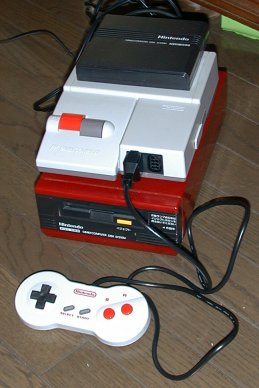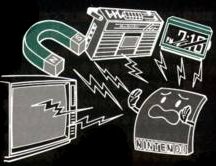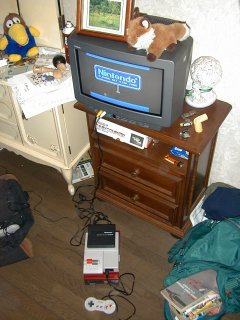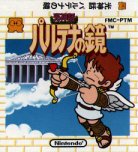Nintendo's new media sparked a wave of enthusiasm among Japanese game freaks at the time - once you buy a disk, you can change the contents of the disks as many times as you want, as long as the disk holds out, for 500 yen per game. Disk Writers were available in toy and department stores all across Japan, and getting a new game written was as simple as waiting a couple of minutes. Gamers could enjoy a wide range of different games for very little money, and didn't have to worry about spending their hard-earned cash on terrible games. But what great games they had to choose from! The very first Disk System game was none other than The Legend of Zelda, a Miyamoto masterpiece that broke new ground in the days when RPGs were still the exclusive realm of computers. Even before Zelda's release Nintendo knew they had a hit on their hands, and was counting on the word-of-mouth from the game to sell Disk Systems. Their next set of games - Volleyball, Super Mario Bros. 2, Metroid, the samurai action/adventure Riddle of Murasame Castle - were all leaps and bounds above the simple arcade ports and one-screen games released before.
Even keeping these factors in mind, though, you can hardly say that the Disk System was a failure. Over 180 games (licensed and non) were released and Disk Writers were chugging away in stores until 1993. Nintendo held several special contests using Disk Fax machines that read the high scores on an inserted disk and sent them to Nintendo for inclusion in a national scoreboard. Even now, in fact, Nintendo in Japan will let you write new games if you send them a disk and 500 yen in stamps - now that's customer service. Using the Disk System
For some reason, the System was not packed with an AC adapter - instead, it's set to run on six C batteries. Strange, eh? Was Nintendo expecting people to take their Disk Systems to the beach, or on the plane? An AC adapter was sold separately and nowadays is pretty hard to find - you can't use another Famicom AC with it. OK, you've got some juice for the System, and you put in a disk again. "LOADING..." says the screen. Excellent!... except it seems to stay on that screen forever, or the unit itself starts making weird sounds. What's going on? Chances are the drive band inside the System has broken, which is a very very common defect in used Disk Systems, unfortunately. The part is replacable, but basically requires virtually the entire disk assembly to be taken apart and put back together. If you're in Japan, though, you can take the unit to Nintendo and pay approximately 1000 yen to have said band replaced. Finally, we're in business! The Games Nintendo themselves made over 30 games for the Disk System, with companies like Konami, Bandai, Sunsoft and DOG (Disk Original Group, a label of Square) as third parties. Like cartridges, disks come in many shapes and colors.
What's of most interest, though, are the games that didn't make it to America. Nintendo produced many of its first ground-breaking games on the FDS - they released zero cartridge games from 1986 until late 1987. The first action RPG in Zelda, the pioneering work of Metroid, the first celebrity-endorsement game (80's pop idol NAKAYAMA Miho starred in Tokimeki High School, a game where you tried to get a date with the singer), the stirring adventure game series Famicom Detectives Club, and the strange mixture of Japanese fairy tales that makes up the adventure Shin Onigashima - all play a great part in keeping the spirit of the Disk System alive. From a collector's standpoint, there are a lot of cool things available. Nintendo released things like a gold-cart version of Punch-Out, a special version of Golf, phone cards and videotapes, the Super Mario Bros. Game + Watch, and so on as contest prizes for certain games. Game copiers in Hong Kong and Taiwan illegally ported Famicom cartridges to the Disk System well into the 90s, and there are a fair number of porno titles from Super Pig, Saison and Phoenix (all various labels of Hacker International). Adding all these up, the total draws nearer to 200 titles - a joy for the 8-bit maniac looking for even more to collect. While not impossible to find, disks (especially non-pirate ones, if you're not in Japan) are a little uncommon, but definitely worth it to any Famicom collector. If you have a Disk System or Twin Famicom, get going! Back...
|



